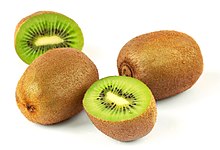**Botanical Fruit Types**:
– Berries: Fleshy fruits without a stone, produced from a single flower containing one ovary. Examples include grapes, currants, tomatoes, cucumbers, eggplants, persimmons, and bananas.
– Drupes: Fleshy fruits produced from a single-seeded ovary with a hard woody layer, like peaches, plums, cherries, olives, coconut, and dates.
– Pomes: Fruits like apples and pears with a core that separates seeds from the outer pericarp. Examples include Juneberries, serviceberries, and Saskatoon berries.
– Aggregate Fruits: Contain seeds from different ovaries of a single flower, e.g., blackberries and raspberries.
– Multiple Fruits: Result from two or more flowers merging or being closely packed together, such as mulberries.
**Fruit Classification and Terminology**:
– Historical evolution of fruit terminology from Latin ‘baca’ to modern classifications by botanists like Andrea Caesalpinus and Carl Linnaeus.
– Lack of a universally agreed system of fruit classification.
– Evolution and phylogenetic significance of fleshy fruits like berries.
– Transition between fleshy and dry pericarps demonstrated in plant families.
– Fruit type’s role in plant classification and understanding phylogeny.
**Culinary and Commercial Uses**:
– Culinary uses of berries rich in antioxidants like anthocyanins, including bananas, blueberries, currants, tomatoes, and cucurbits.
– Spices made from dried berries like allspice and chili pepper.
– Traditional uses of berries as dyes and containers.
– Commercial production of fruits like bananas, watermelon, and grapes.
– Top fruit crops by weight in 2013 were botanical berries.
**Export and Production Statistics**:
– Comparison of top fruit exports, including bananas and citrus fruits.
– Significance of citrus fruits like oranges, lemons, and grapefruits in world fruit production and export.
– Data analysis using FAOSTAT for production and export comparisons.
– Different categories impacting export vs. production quantities.
– Citrus fruits dominating export quantities, with oranges being a major contributor.
**Additional Information**:
– Mention of accessory fruits like strawberries and mock strawberries.
– Historical uses of berries in dye production.
– Early domestication of plants like cucurbit berries.
– Notable fruit exports in 2012, including prepared fruit products.
– Reference to various glossaries and studies on fruit types, classifications, and historical perspectives.
In botany, a berry is a fleshy fruit without a stone (pit) produced from a single flower containing one ovary. Berries so defined include grapes, currants, and tomatoes, as well as cucumbers, eggplants (aubergines), persimmons and bananas, but exclude certain fruits that meet the culinary definition of berries, such as strawberries and raspberries. The berry is the most common type of fleshy fruit in which the entire outer layer of the ovary wall ripens into a potentially edible "pericarp". Berries may be formed from one or more carpels from the same flower (i.e. from a simple or a compound ovary). The seeds are usually embedded in the fleshy interior of the ovary, but there are some non-fleshy exceptions, such as Capsicum species, with air rather than pulp around their seeds.


Many berries are edible, but others, such as the fruits of the potato and the deadly nightshade, are poisonous to humans.
A plant that bears berries is said to be bacciferous or baccate (from Latin bacca).
In everyday English, a "berry" is any small edible fruit. Berries are usually juicy, round, brightly coloured, sweet or sour, and do not have a stone or pit, although many small seeds may be present.
